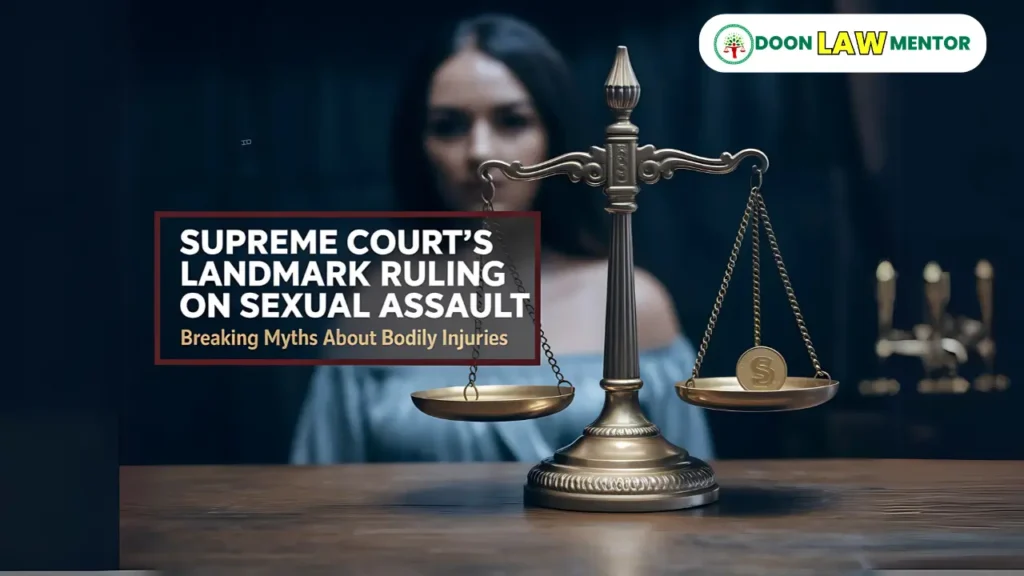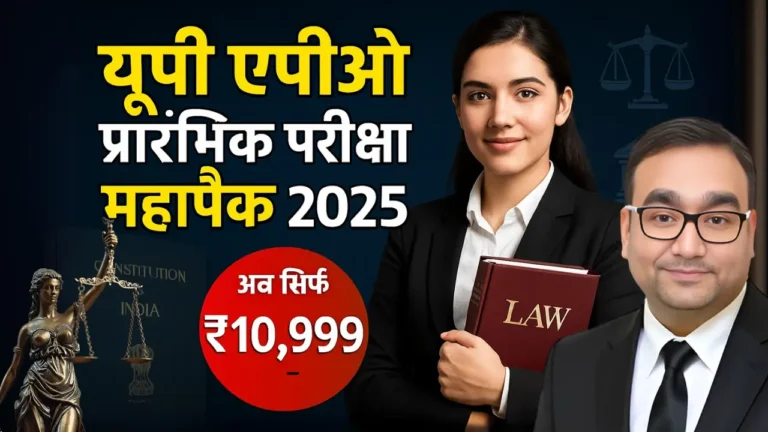In a landmark judgment, the Supreme Court of India has reiterated that bodily injuries are not necessary to prove sexual assault, challenging a long-standing myth surrounding such cases. The judgment, delivered in the case of Dalip Kumar @ Dalli v. State of Uttarakhand (2025 SC), reflects a progressive stance on how trauma and victim behavior are perceived in legal proceedings.
This article delves into the judgment’s details, its legal reasoning, and its broader implications for India’s criminal justice system.
Table of Contents
Case Background: Dalip Kumar @ Dalli v. State of Uttarakhand 2025 SC)
The case arose from an appeal filed by Dalip Kumar, challenging his conviction for:
- Kidnapping under Section 137 of the Bharatiya Nyaya Sanhita, 2023 (previously Section 363 of the Indian Penal Code).
- Inducing a minor girl for illicit intercourse under Section 366 of the Indian Penal Code.
The conviction had been affirmed by the High Court, but the Supreme Court took a different view, ultimately acquitting the appellant based on the evidence presented.
Key Observations by the Supreme Court
1. Bodily Injuries Are Not Necessary to Prove Sexual Assault
The Bench of Justices Hrishikesh Roy and S.V.N. Bhatti emphasized that:
- It is a common myth that sexual assault must leave physical injuries.
- Victims react to trauma in diverse ways influenced by factors such as fear, social stigma, or feelings of helplessness.
The Court pointed out that the stigma associated with sexual assault often prevents survivors from disclosing the incident, leading to varied responses to trauma.
2. Importance of Understanding Trauma
The judgment referred to the Supreme Court’s Handbook on Gender Stereotypes (2023), which underscores that:
“There is no ‘correct’ or ‘appropriate’ way for a survivor to behave after being sexually assaulted. Every individual reacts differently to traumatic events.”
3. Victim’s Testimony and Lack of Corroborating Evidence
- The Court noted that the victim voluntarily accompanied the appellant, as stated in her testimony.
- Although the victim’s younger sister reportedly saw her leaving with the appellant, she was not presented as a witness, weakening the prosecution’s case.
Legal Reasoning and Judgment
1. No Evidence of Force or Illicit Intent
- The victim’s testimony and the lack of forcible abduction invalidated the charge of kidnapping.
- Similarly, the absence of coercion or intent for illicit intercourse undermined the second charge.
2. Role of Medical Evidence
- The medical examination of the victim showed no bodily injuries, which the Court ruled irrelevant to proving sexual assault.
3. Prosecution’s Failure to Prove Its Case
- The Court criticized the prosecution for failing to present the victim’s sister as a key witness and for relying on weak evidence.
Final Ruling
The Supreme Court quashed the conviction, stating:
“The prosecution failed to prove the ingredients of both kidnapping and the offence of inducing a minor girl for illicit intercourse. The impugned judgment is accordingly set aside, and the appellant stands discharged of the bail bond furnished by him.”
Significance of the Judgment
1. Breaking Myths About Sexual Assault
The judgment dismantles the misconception that physical injuries are necessary to validate claims of sexual assault. This is a crucial step toward ensuring justice for survivors, regardless of the physical evidence presented.
2. Addressing Gender Stereotypes
The Court’s reference to the Handbook on Gender Stereotypes reinforces the need to assess cases based on facts and trauma-informed perspectives, rather than societal biases.
3. Emphasizing Trauma-Informed Justice
The ruling highlights that survivors may exhibit varied reactions to trauma, which must not be used to discredit their experiences.
Implications for India’s Criminal Justice System
1. Enhanced Sensitization
The judgment underscores the importance of sensitivity training for judges, lawyers, and law enforcement officers to understand trauma and avoid perpetuating stereotypes.
2. Reassessing Evidence Standards
Courts must assess sexual assault cases with an emphasis on victim testimony, corroborative evidence, and context, rather than relying solely on physical injuries.
3. Strengthening Prosecution Practices
The case highlights the need for prosecutors to present comprehensive and reliable evidence, including key witnesses and corroborative testimony, to avoid wrongful convictions.
FAQs on the Landmark Judgment
1. What was the key takeaway from the Dalip Kumar @ Dalli v. State of Uttarakhand judgment?
The Supreme Court ruled that bodily injuries are not necessary to prove sexual assault, emphasizing that victims respond to trauma in varied ways.
2. How did the Court address gender stereotypes in this case?
The Court referred to the Handbook on Gender Stereotypes (2023), highlighting that there is no “correct” way for a victim to behave after trauma.
3. Why was the appellant acquitted?
The Court found that the prosecution failed to prove both charges of kidnapping and intent for illicit intercourse, relying on weak evidence and missing key witnesses.
4. What are the broader implications of this judgment?
The ruling challenges myths surrounding sexual assault, promotes trauma-informed justice, and emphasizes the importance of victim testimony over physical evidence.
5. How does this judgment align with the Constitution of India?
By addressing stereotypes and focusing on facts, the judgment upholds Article 21 (Right to Life and Dignity) and promotes justice for survivors.
Conclusion
The Supreme Court’s decision in Dalip Kumar @ Dalli v. State of Uttarakhand (2025) is a landmark ruling that redefines how sexual assault cases are assessed in India. By rejecting myths about bodily injuries and emphasizing trauma-informed perspectives, the judgment sets a progressive precedent for future cases.
As India’s judiciary continues to evolve, such decisions pave the way for a more equitable and sensitive legal system, ensuring that survivors receive the justice they deserve without prejudice or stereotypes.
#DoonLawMentor SupremeCourtJudgment #SexualAssault #CriminalLaw #TraumaInformedJustice #LegalUpdates







